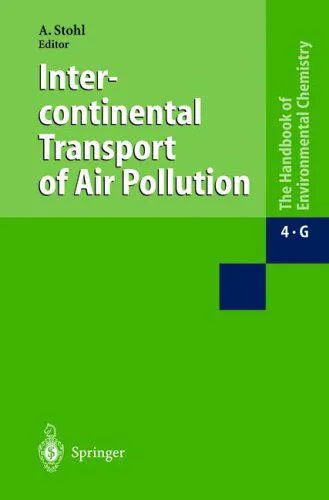Intercontinental Transport of Air Pollution: Will Emerging Science Lead to a New Hemispheric Treaty?
4.3
Reviews from our users

You Can Ask your questions from this book's AI after Login
Each download or ask from book AI costs 2 points. To earn more free points, please visit the Points Guide Page and complete some valuable actions.Related Refrences:
Introduction
The intricate dance of air pollution across national borders raises profound questions about how we understand, manage, and legislate our shared atmospheric environment. In "Intercontinental Transport of Air Pollution: Will Emerging Science Lead to a New Hemispheric Treaty," we delve into the mechanisms and challenges of air pollution as it transgresses traditional geopolitical boundaries, necessitating a common approach to environmental stewardship.
Detailed Summary of the Book
This book explores the advent of new scientific methodologies that reveal the extent and implications of air pollution across continents. As advancements in technology unveil the complexities of atmospheric interactions, we face the critical question of whether a unified, hemispheric treaty might emerge as a feasible solution to address these transboundary challenges.
The narrative unfolds through several key themes. Initially, it introduces the fundamental scientific principles of atmospheric transport phenomena, followed by a rigorous analysis of various pollutants that traverse regions. It further examines case studies illustrating the tangible impacts of these pollutants on ecosystems and human health. The role of international organizations and existing treaties forms a cornerstone of the discussion, evaluating their effectiveness and limitations in the current geopolitical climate. Lastly, the book contemplates future scenarios and policy implications, questioning whether the evolving science of air pollution could catalyze a new era of cooperative environmental governance.
Key Takeaways
This book delivers several vital insights:
- Scientific Advancements: Cutting-edge research methodologies are crucial for detecting and understanding cross-border air pollution.
- Policy Implications: Current policies may be inadequate in addressing the transboundary nature of air pollutants, necessitating reevaluation and adaptation.
- International Collaboration: Enhanced cooperation at a hemispheric level could lead to more effective management of air quality issues.
- Environmental Justice: The disparity in pollution impacts across different regions underscores the need for equitable solutions.
- Treaty Potential: The potential for a new treaty hinges on scientific consensus, political will, and international commitment.
Famous Quotes from the Book
'Amidst the invisible currents of the atmosphere lies an undismissable truth: what we exhale on one continent may be inhaled on another.'
'The sky may seem endlessly vast, yet within its expanse resides the pressing need for stewardship that matches the scale of our emissions.'
Why This Book Matters
"Intercontinental Transport of Air Pollution" is pivotal because it situates itself at the nexus of science and policy—a critical juncture as the world grapples with global environmental challenges. The insights offered extend beyond academia, providing a call to action for policymakers, environmentalists, and educators.
As global interdependence becomes increasingly recognized, the implications of air transport on health, economy, and climate highlight the necessity for novel strategies to manage shared resources. This book not only illuminates the path toward potential solutions but also fosters dialogue necessary for a future where cross-border cooperation is not just desirable but essential.
Free Direct Download
You Can Download this book after Login
Accessing books through legal platforms and public libraries not only supports the rights of authors and publishers but also contributes to the sustainability of reading culture. Before downloading, please take a moment to consider these options.
Find this book on other platforms:
WorldCat helps you find books in libraries worldwide.
See ratings, reviews, and discussions on Goodreads.
Find and buy rare or used books on AbeBooks.



